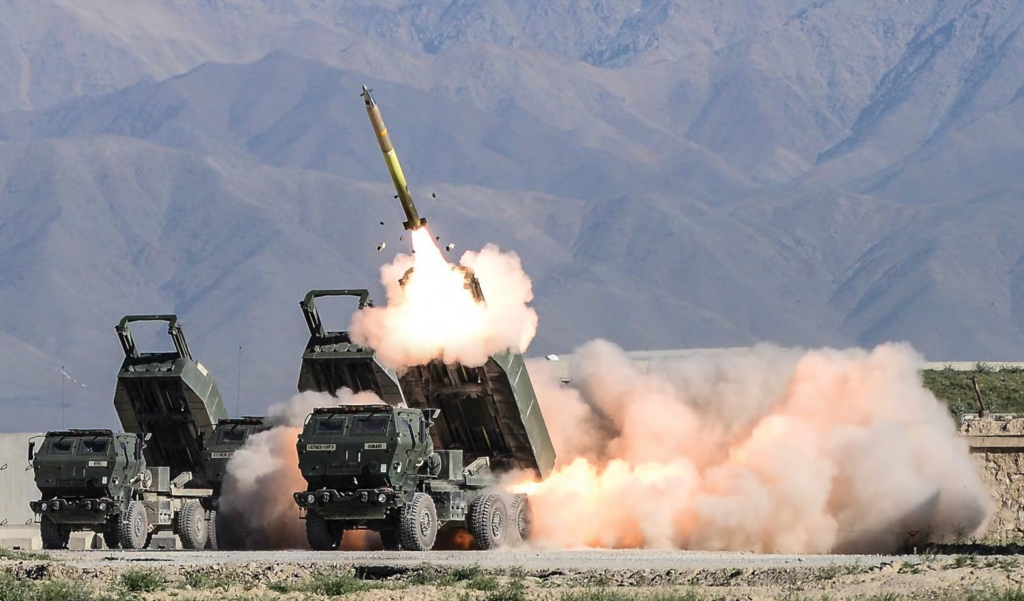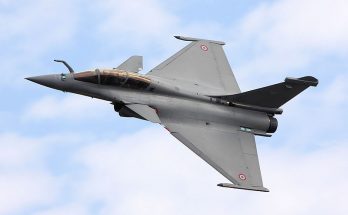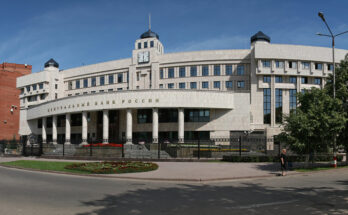
The Ukrainian military has begun using Army Tactical Missile Systems (ATACMS) for strikes inside Russia, days after the Biden administration lifted the restriction on U.S.-supplied weapons. Sources told the Financial Times on Tuesday that the strikes hit a weapons depot in Russia’s Bryansk, confirming a separate statement from the Russian Ministry of Defense that its air-defenses had engaged ATACMS over the region. The U.S. policy shift comes amid Russian advances on the battlefield and a big domestic political change that will see Donald Trump return to the White House in January.
All along as it took delivery of weapon systems from its Western partners following the start of Russia’s invasion in 2022, Kyiv has consistently requested permission to use them against targets on Russian soil, pointing to Russian arms depots and supply lines behind the border that aid its war effort. Up until now, however, the U.S. in particular has been hesitant to approve ‘deep strikes’ into Russia, fearing that doing so would prompt escalation from Moscow. What emerged thus was an odd incongruence, where Ukraine could deploy Western-made missile systems against targets on its own soil, but had to rely exclusively on its local-made missiles (and especially drones) to hit anything further afield.
Over this past weekend, various U.S. media outlets reported that the Biden administration had changed course and conveyed to Kyiv that it may now carry out deep strikes against Russian military targets. No official statement has been produced, leaving it to anonymous sources to reveal the details. Interestingly, the reports noted that this green-light came with its own set of conditions, limiting the usage of ATACMS and other weapons to the area around Kursk, a Russian region partially under Ukrainian control since August. The reported site of the first strikes on Bryansk, however, would indicate that the scope of territory covered under the strike approval is wider than initially implied.
The U.S. policy reversal comes amid several substantial changes in the war’s dynamics over the past few months. Grinding stalemates on the battlefield in eastern Ukraine have given way to a slow-burning Russian advance. In February, Russia captured the city of Avdiivka, formerly a Ukrainian military stronghold that had been on the frontlines since 2014, enabling its troops to continue on to the outskirts of Ukrainian military logistics hub Pokrovsk to the northwest. Further to the southwest, Russia took the large town of Vuhledar at the start of October. Russia has taken ground at extraordinary cost, but the Kremlin figures, particularly at this stage of the war, that it can absorb losses of personnel and hardware better than Ukraine can, even with growing storm clouds in the Russian war-time economy.
Over the summer, Ukraine aimed to relieve pressure in the east and southeast with an offensive of its own, launching an invasion into Russia’s Kursk region that rapidly captured over 1,000 square kilometers and dozens of Russian villages. Social media showed Ukrainian soldiers triumphantly riding into Russia, over two years after the start of an operation that Russia originally expected to win quite quickly. The advance never made it to the provincial capital, but even months on, Ukraine continues to occupy a sliver of Russian territory, including the gas transit town Sudzha.
Even while it found tactical success, the Ukrainian offensive into Kursk failed in its strategic goal of diverting Moscow’s attention. The Kremlin ultimately chose to accept the embarrassment of Ukrainian flags over Russian territory in order to keep up momentum on the frontlines in Donetsk. Now, Russia has begun mounting its response to the Kursk incursion, enlisting thousands of North Korean troops to aid in operations to re-take the region.
And as their armies battle it out on the frontlines, Ukraine and Russia are also locked in a long-range battle pitting their drone and missile arsenals against one another. Regular Russian drone and missile barrages are exhausting Ukraine’s supplies of air-defense weapons, which are difficult for Ukraine to replace. Russia has, in particular, targeted Ukraine’s energy infrastructure, evidently aiming to immiserate the country ahead of another winter.
On the other side of the world from the battlefield, the U.S. held new elections on November 5 that saw victory for Republican standard-bearer Donald Trump and Congressional Republicans, likely entailing a sea change in U.S. policy towards the war. Trump campaigned on a promise that he could end the conflict in a single day, and Kyiv’s dependency on the West – and in particular, the U.S. – for military and economic aid entails significant leverage over Ukraine should Trump choose to wield it, as some of his allies in Congress have pushed for.
Trump, of course, has been characteristically light on details about what he may actually do once back into the Oval Office. His incoming Cabinet, equally-stocked with foreign policy hawks and isolationists, betrays no clues. “I promise you will be happy with me,” Trump reportedly told Ukrainian President Volodymyr Zelensky in a private meeting in September, when the Ukrainian leader came to New York. That remains to be seen.
Both Kyiv and Moscow expect that Trump will push for serious dialogue aimed at ending or freezing the war, meaning that both will spend the upcoming months until Trump’s inauguration looking to consolidate their respective negotiating hands. Russia is in particular racing to push Ukraine out of Kursk, to eliminate the region as a potential bargaining chip for the Ukrainian side. The Biden administration finally allowing Ukraine to use ATACMS to defend its Kursk salient is an effort to prevent that from happening and put Kyiv in the best negotiating stance possible ahead of handing off the reins to the Trump team.
While Ukraine is already making use of the new strike permissions, from Kyiv’s perspective the Biden administration’s policy shift is too little, too late. Despite the immense amount of aid the U.S. has mustered since February 2022, Ukraine’s government feels as though the West has only gone far enough to help Ukraine survive, but not far enough to help it win. That might explain why Ukraine has been somewhat sanguine about Trump’s victory – despite the apparent risks, from Kyiv’s view, something needs to change in the conflict that has been slowly bleeding Ukraine of men and money.
Military markets analyst, covering Eurasia, Middle East, and Africa.




